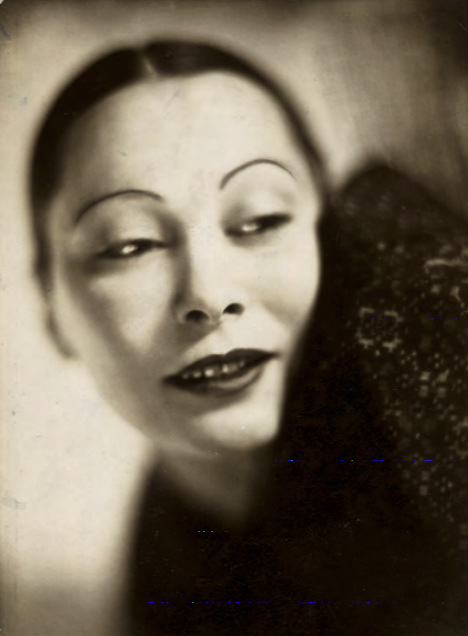She attracted attention by her attitude, her colourful costumes and by a programme that alternated Russian and Chinese dances with illustrations of contemporary fashion. Her characteristic dances and her strange beauty made her famous. Today, a Stolperstein in front of the Renaissance Theater in Berlin-Charlottenburg commemorates dancing artist and Holocaust victim Tatjana Barbakoff.
Tatjana Barbakoff was born as Cilly Edelberg in Latvia in August 1899. She came from a Jewish family with Russian-Chinese roots. From a very early age, Barbakoff began to dance. Her heritage and her preferred styles became part of her later ascribed exotic aura.
During the First World War, Tatjana met German officer Georg Waldmann. In 1918, Tatjana followed him back to Germany and eventually married him. In the following years, they became known as an artistic couple, under the names of Tatjana Barbakoff and Marcel Boissier. Together they travelled through Germany and performed in cities, such as Frankfurt, Düsseldorf and Berlin. In 1925 the couple settled in Berlin. Tatjana had her final breakthrough with the so-called ‘Berliner Tanzabend’. She broke up with Boissier and met artist Gert Wollheim, who became her new partner.
When the Nazis came to power in 1933, Gert’s art was labelled as ‘degenerate’. The couple moved to France where Wollheim established the Freie Deutsche Künstlerverband (Liberal German Artist Foundation) and Tatjana continued her dancing career. For a time they were free and safe but after Nazi Germany invaded France in 1940, both Gert and Tatjana were arrested.
After some time Gert and Tatjana were released. The couple fled to Nice hoping to avoid further arrest but this turned out to be in vain. In January 1944, Tatjana was arrested by the Gestapo and transferred to a camp in Drancy. In February, she was deported to Auschwitz where she was sent to the gas chambers upon arrival.
